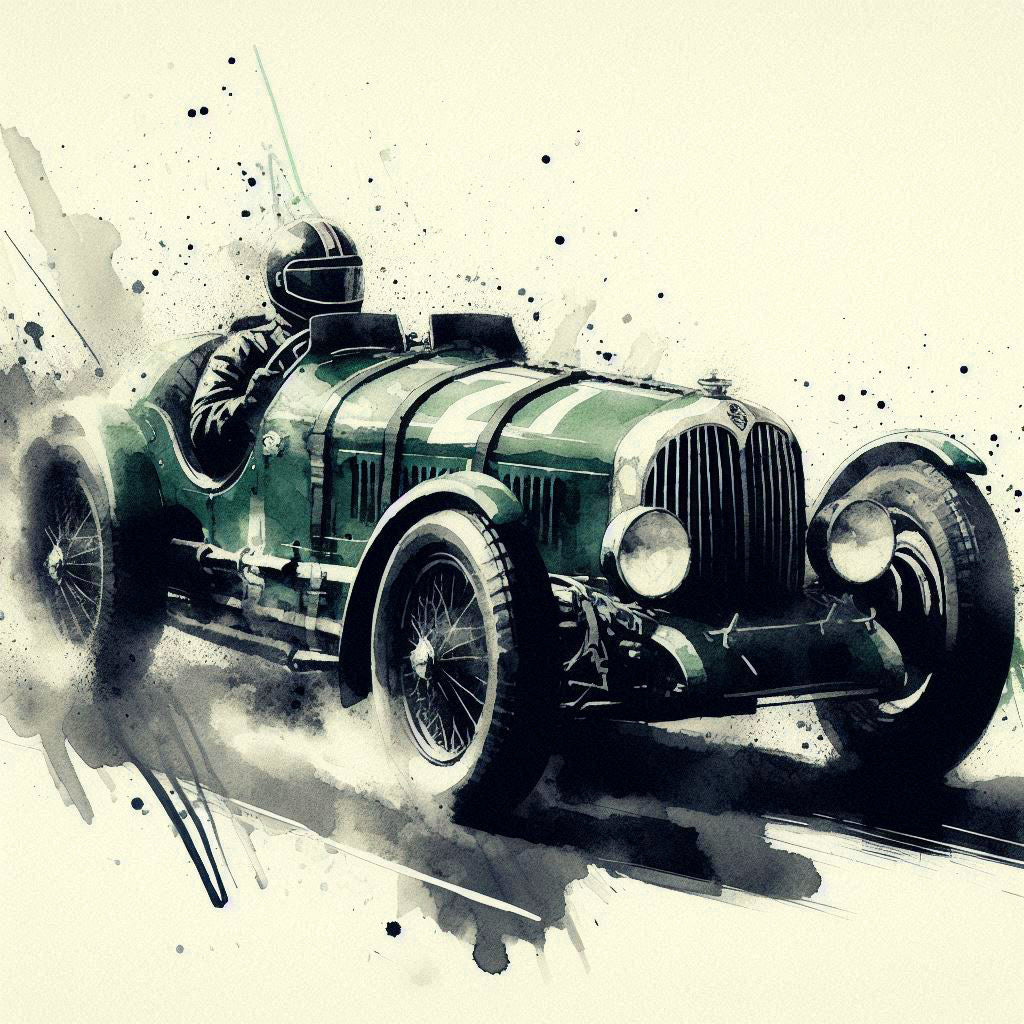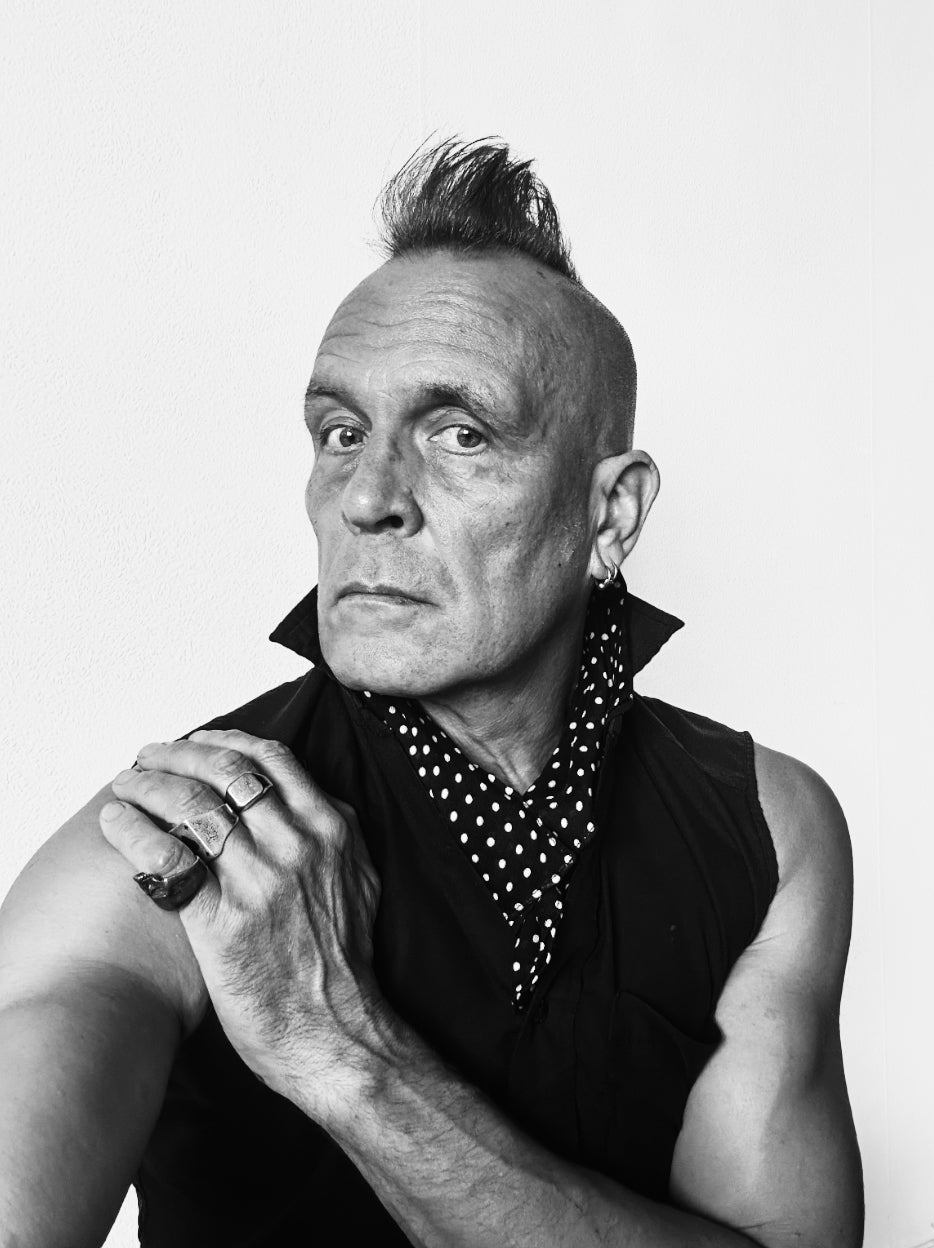A Renaissance For The Smoke Machine: The Stylus Method, Silk Scarves & The Sixties.

Blending art rock and British psychedelia with electrifying live performance and stellar stage-wear, The Stylus Method are a blast from the past in the most relevant way. From northern origins to a West London residency, we caught up with Jordan Frazer and Oliver Wells from the band to talk about all things sartorial and where they plan to go musically and beyond in 2024/25.
Tell us a little about The Stylus Method, your influences and what you all do in the band.
J: We formed in Leeds in late 2018. I was living there, doing a masters in law. I’d been away from playing in bands for a few years and needed it back in my life. I put an advert in the local music papers looking for someone to collaborate with – just jam with really – something like ‘lonely guitar player seeks lonely bass player for good times, influences: John, Paul, George, Ringo, Mick and Keith’. When Jamie responded I didn’t quite appreciate how lucky I was. We spent about a year writing, playing, recording demos and looking for the right musicians to join us on whatever this endeavour would be. After a period of band-namelessness, a couple of transitionary line-ups, a rather rudimentary EP and an eclectic first album finished during lockdown no.1, we found ourselves down in London, recording at Abbey Road, resident band at the Troubadour, selling out shows in the capital and playing for Sir Michael Eavis!
My biggest influence, musically, will always be Paul McCartney. He’s just the greatest – melodically, vocally, stylistically. Lyrically, we’ve all sorts of influences from Dylan, Ray Davies, Kerouac and Keats. Oliver’s a Bowie man and Jamie loves the Floyd. The last album was very much a 1966 sound. The next one (which we’ve just recorded) is a little more glam. More on that later!
O: We digress...Jordan is on lead vocals, guitar and piano, Jamie on bass, vocals, piano and pretty much any other instrument you could hand him – he is very much our John-Paul Jones. I’m on drums, percussion etc and sing a few harmonies too.

Do you think there is a natural synergy between fashion and your music?
O: For sure! We’ve always thought of bands not just as musicians but as a package in terms of imagery. Music is something we spend our lives escaping into and I think you can only really do that when an artist or band has a strong identity to compliment what they’re all about. One of the best things (if not THE best) about being in a band is that when you’re up there on stage you’re in your own little gang, playing for but separate from your audience. Only you know what it’s like to share that with the other guys and it’s nice to have a kind of ‘uniform’ to wear when you’re up there.
J: And it’s fun to dress up – it helps separate us from our stage selves, project who you are as a performer and represent the image when you’re not on stage, fake it ‘til you make it and all that... We played in Pilton earlier this year and Sir Michael Eavis mentioned our stage outfits, citing Ray Davies and telling a story about playing The Kinks’ ‘Lola’ to his cows. That was a story I’d heard before in music folklore, but to hear it from the man himself was a special moment in my musical career – and all prompted by our outfits!

Your last album, ‘The Imaginary Costume Party’ was a concept record set in 1960s ‘Swinging London’. What inspired that decision and how did you use the fashion of the time as part of the project?
J: I’ve always been obsessed with that golden period of British music around 1965-1967 when London was an artistic melting pot, where creativity and originality ranked higher than class, and pop stars rubbed shoulders with playwrights, fashion designers, actors, painters, the aristocracy and the darker London underworld. I’d read a great book by Keiron Pim called ‘Jumpin’ Jack Flash’ about a man named David Litvinoff. That inspired a single called ‘Mad’ which crystallised the concept and then became the blueprint for the album that followed. That was the overarching idea behind the character stories which make up the album, that all of those characters could exist in the same universe, coming in and out of each other’s songs with some musical and lyrical call-backs to tie it all together. There was an autobiographical element too, of course. The songwriting was a reflection of where I saw myself in society, both generationally but also the corporate career path I’d chosen and whether that was really what I should be doing. A number of the songs touch on the psychology of relationships, feelings of inadequacy, male and female identity and the need for creative/spiritual fulfilment.
Essentially, we wanted to create an album that sounded like it could’ve come out of Abbey Road in 1966 and an album cover that could’ve been dressed by Granny Takes a Trip, I Was Lord Kitchener’s Valet, Lord John, Hung On You – those legendary Kings Road boutiques. Lots of velvet, silk and finery. Even 18 months later, people still talk to us about that cover. It was a lot of fun to shoot as well.
O: My first recording session with the band was in Studio 2, Abbey Road. Downhill from there, right?! I was sitting in ‘Ringo corner’ and looking out over the legendary space, you could feel the music in the walls. It was just a fantastic experience and we made an album we were really proud of. I think we’ve grown a lot as musicians since then and learned a lot about the recording process which will hopefully pay dividends on the next releases, but nothing will beat that feeling of playing that ‘Mrs Mills’ upright piano, which Paul and John played on and walking up and down that iconic staircase... and 50 years to the day since the first day of ‘Dark Side’ in that very room. It really was one of the more surreal experiences...then back to the day job on the Monday.

And how is the London music scene in 2024? Still swinging?
O: Yes, I think so. Particularly in West London, Soho and Camden - there is still an artistic community where the people all know each other and any night of the week you can go out and see brilliant original music. We’re a resident band at The Troubadour which has such a fantastic atmosphere for live music (and the restaurant upstairs is very good too!). Spiritual Records in Camden is also a great hub for independent artists – Michael Kiwanuka and Sam Ryder both came out of Spiritual so that’s a buzzing little scene.
J: Not just venues either – there’s some cool little London cafes where you can fuel yourself up and which have a real vibe to them. Bar Italia in Soho for example or Terry’s Café in Borough and Austin, who runs the place, loves his music and his mod fashion.

As our readers will see, The Stylus Method are a fan of neckwear on stage these days. How important is that to you and what does it say about you as individuals and collectively as a band?
O: It was a gradual thing really – the more we’ve played together, the more flamboyant we’ve become on stage; and the scarves are an extension of that for us. We all have slightly different styles but using accessories such as neckwear brings it all together and gives the band’s image a focal point/flourish. For example, I tend to wear neckerchiefs or bandanas, Jordan goes for an ascot or a cravat and Jamie wears a pocket square or silk scarf (for special occasions). Mixed in with myself and Jordan donning the occasional Fedora, it all really helps build an identity.
J: I also like an aviator. I had flying lessons once but didn’t have the maths qualifications to be a pilot, so the aviator scarf is as close as I’ll get!

If you could choose your Top 3 ‘looks’ from music history, who would make the cut?
J: That’s almost the impossible question. Okay, I’d say, in no particular order: 1. Paul McCartney at the Sgt. Pepper launch party at Brian Epstein’s flat in Belgravia. A loose scarf over a t-shirt with a blazer. It’s a timeless look and could be worn by Alex Turner now. 2. Keith Richards at the Isle of Wight Festival, 1970 – red velvet trousers, blue t- shirt, orange neckerchief and tinted shades. 3. George Harrison’s pink pinstripe suit from Get Back. Iconic.
O: In all honesty, I’m probably just going to pick three David Bowie outfits. The man really was the greatest clothes hanger of all wasn't he? The mint-green suit from the Freddie Mercury tribute concert, anything from 1983 really, Oxford bags, a smart white shirt with an open collar and loose tie, and in The Man Who Fell To Earth: smart tan fedora, coat over the shoulders like something from The Godfather, just exquisite.

Are there any current or up-and-coming bands/artists that you admire for their style (as well as their music of course!)?
O: I really enjoy what Harry Styles is doing at the moment. He blends retro with ultra-modern really well. Its not what I would wear myself, but Jacob Collier is someone who is completely in command of his image, really unique. The Molotovs, The Misty, The Howlers, Creeping Jean are all bands on the scene at the moment who look great and really use their stage looks to complement their music. We’re a big fan of all of those guys.
J: Peter Rugman of The Nonstickpans knows what he’s doing as well. I believe he’s a fan of Soho Scarves. He wears it well (and is an extremely talented songwriter too).
Do you have any particular favourite Soho Scarves products to tell our readers about?
J: So many, I don’t have enough wardrobe space – you can actually see our current favourite selections on 'The Stylus Method Picks’ page of the Soho Scarves website. That’s a little collection of what we’ve been wearing lately (on and off stage).
It sounds like the last 12 months has been quite a rollercoaster for the band and that things are really starting to happen for you. What can we expect next and how can our readers find your music and see you play?
J: We certainly hope so and it does feel that way. We’re very grateful to each and every one of our fans who support us, come to see us, buy the merchandise and help us drive it all forward. It’s quite surreal at times. We’re kicking off this next era of the band with a re-imagined release (and live version) of a fan favourite, and our next new single, ‘The Long Goodbye’ is set for release in the early summer – we’re incredibly excited for this one, so make sure you pre-save and look out for that! We’ve got 3 more singles on their way and a few little surprises too! Our next residency show at The Troubadour is on Saturday 22nd June 2024.
O: And we’re putting the finishing touches to our third album later this year. We’re all very excited about this new collection of songs and can’t wait for everyone to hear it (the album title may even be hidden somewhere in this interview...)

So, as we continue onward into the vortex of a 1960s fashion and music revival, The Stylus Method are certainly ones to watch. Expect bigger and better new music, live shows and good-humoured flamboyance. Come on down to The Troubadour – we’ll all be waiting for you.
And if you want to emulate their look, don’t forget to check out The Stylus Method Picks on our website.
Explore The Stylus Method further: Thestylusmethod | Twitter, Instagram, TikTok | Linktree
Check out The Stylus Method’s music on all streaming platforms.
Also follow them now on Social Media to keep up to date with the band, gig news, live clips, covers and more!
Instagram: The Stylus Method (@thestylusmethod) • Instagram photos and videos
Facebook: The Stylus Method | Facebook
X (Formally Twitter): x.com/TheStylusMethod
Tickets to their next gig in London can be purchased here:
Photography by Sara Gennat.


